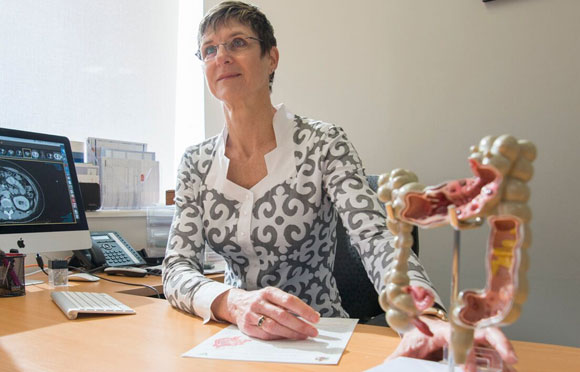What is an anal abscess?
An anal abscess is a pus-filled lump near the anus or rectum. Most anal abscesses occur because a gland inside the anus becomes infected.
The abscess is usually superficial – appearing like a red swelling around the anus. But some abscesses will be in the deeper tissues, where they are less visible. Where ever they occur, they are usually painful.
The most common and successful treatment of an anal abscess is surgical drainage.
Without early treatment, 50% of people with an anal abscess develop a complication called a fistula. This is where a small tunnel develops between the abscess and the skin. The fistula may continue to drain or it can close over, which leads to recurrent anal abscesses.
Anal abscesses usually occur in adults between 20 and 60 years of age, but they can also affect children.

What are the symptoms of an anal abscess?
The most common symptom is pain in the anal area. The pain is usually constant, throbbing and worse when you sit down.
If you have an anal abscess, you might also have:
- hardened tissue around the anus
- a lump or nodule near the anus
- tenderness and irritation around the edge of the anus
- a discharge of pus (which may look bloody)
- constipation or painful bowel motions.
Sometimes the infection can cause fever, chills and leave you feeling generally unwell.
What causes an anal abscess?
Causes of anal abscess include:
- blocked anal glands
- infection of an anal tear
- sexually transmitted infections.
There are several factors that increase the risk of developing an anal abscess. These include:
- inflammatory bowel disease (IBD) such as Crohn’s disease and ulcerative colitis
- diverticular disease
- pelvic inflammatory disease
- diabetes
- being the receptive partner in anal sex
- taking certain medications such as prednisolone.
You can minimise some of these risk factors by using a condom during sex, including anal sex.
How is an anal abscess diagnosed?
Your GP can diagnose an anal gland abscess by examining your anal area. The examination will usually include a digital rectal examination. This is where your doctor places a gloved finger inside your anus and rectum to check for lumps or anything abnormal.
Because of the different causes and risk factors for anal abscess, your doctor may check for:
- sexually transmitted infections
- inflammatory bowel disease
- diverticular disease
- colorectal cancer.
In some cases, your doctor might recommend imaging (such as an ultrasound, MRI or CT scan).
How is an anal abscess treated?
Surgical drainage
The best treatment of an anal abscess is usually prompt surgical drainage. Ideally, drainage is performed before the abscess has burst. This reduces the likelihood of a fistula forming.
To treat a superficial abscess, your anal abscess specialist will cut a small hole in the abscess to drain out the pus. This can sometimes be done under local anaesthetic in your doctor’s office. If you have a large or deep abscess, you might need to be treated in a hospital.
After surgical drainage, most people are prescribed pain relief medications. But discomfort tends to be mild and most people get back to work/school quickly. Antibiotics are usually reserved for people with diabetes or decreased immunity.
Possible complications after surgery are infection, anal fissure, scarring or abscess recurrence. You can help reduce your risk of these by following your doctor’s advice.
After surgery
Taking ‘sitz’ baths can help keep the area clean and help healing. These are where you soak the affected area in warm water (2–4 times a day), especially after a bowel motion. If you don’t have a bath, a hand-held shower can be used to gently spray the area.
If there is any drainage after surgery, you can use absorbent dressings to prevent staining of your underwear.
You might also benefit from adding fibre to your diet and increasing your fluid intake to prevent hard stools.
